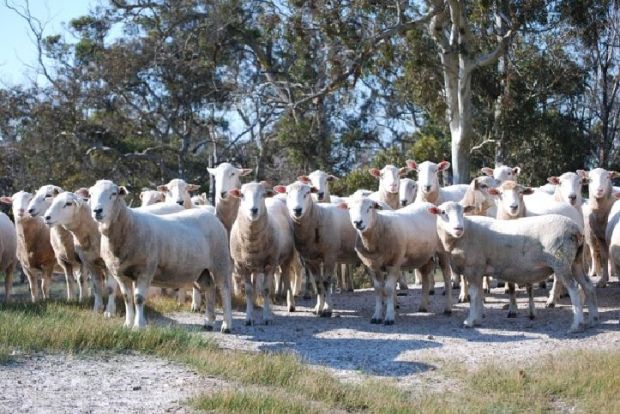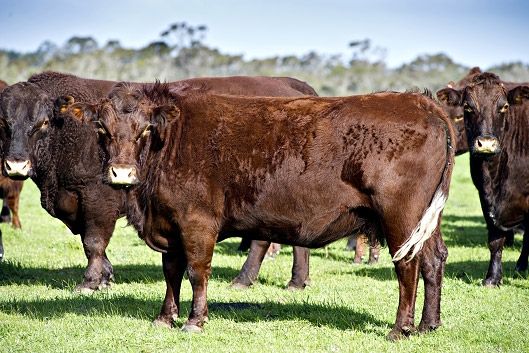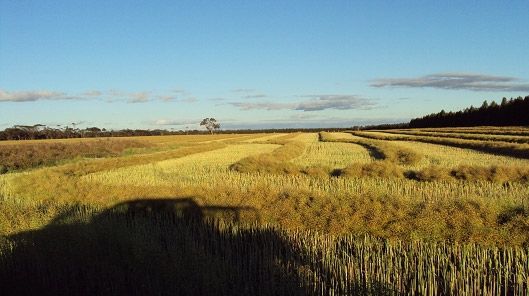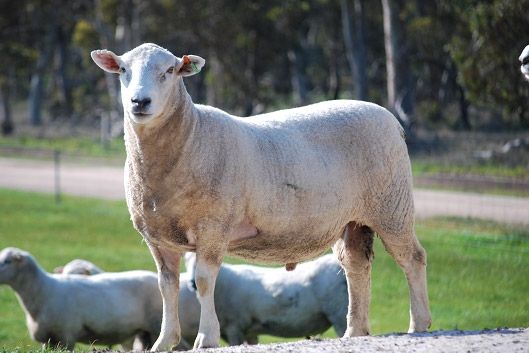Glenridge Park run approximately 8,000 self-replacing Greeline Composites ewes with an annual production of over 10,000 prime lambs. This is also complimented by 600 commercial Sussex breeding cows and a 3,200ha. cropping program. The farm has a very commercial focus with stud development aimed at maximising the productivity of the commercial operations. With this in mind fertility, early growth, carcase conformation and feed conversion are the main criteria used when selecting sires for beef and prime lamb production.
Traditionally prime lamb production at Glenridge Park utilised the Border Leicester cross Merino ewe due to its high fertility excellent growth rates and carcass characteristics when crossed to terminal sires. However, in 2005 it was identified that the main profit limiting aspect of our prime lamb operation was the reliance on purchasing Merino ewes in order to breed replacement 1st cross ewes. Firstly, we identified that there were bio-security issues associated with purchasing large numbers of breeding stock which include lice, footrot, worm resistance and more recently the increased risk of contracting OJD. Also, with a heavy focus on prime lamb production, the Merino flock wasn’t performing to the same level as the 1st cross ewes. With this in mind it was decided that a self replacing breed was required that meet a number of requirements. These were high fertility, good mothering and milking ability, fast growing, early maturing and excellent carcass attributes. Thought was given initially to breeding our own composite however on a trip to New Zealand we discovered the Greeline Maternal Composite which was imported the following year.
Since the introduction of the Greeline the number of lambs weaned to ewes mated has improved to over 125% with faster growth and higher weaning weights. The ability to mate ewe lambs has also improved, where in 2012, over 1,800 ewe lambs scanned pregnant lamb with 700 of these bearing twins. To maximise lambing percentages adult ewes are mated in February to coincide with peak ovulation and to ensure there is adequate feed for uninterrupted lambing in July. Scanning to cull dry ewes and identify twin and single bearing ewes is a must so that these can be managed according to their energy requirements to prevent lambing difficulties and twin lambs disease. Mob size ranges from 200 to 400 ewes at lambing and 800 to 1,400 ewes post lambing to facilitate rotational grazing and reduce management costs.
Weaning occurs in late October/November where the lambs are around 14 weeks of age. Lambs weighing over 45 kg are sent to the abattoir with the remaining lambs either finished on green feed where possible or retained and finished using a total mixed ration under feedlot conditions. The replacement ewe lambs are also placed on the feedlot in early December and grown to achieve an average mating weight of over 50 kg in March. These are mated to Cheviot rams to prevent lambing difficulties and produce lambs with good early vigour and growth.
Glenridge Park run 850 head of commercial cattle producing around 800 calves annually the majority of which are finished on the properties beef feedlot. Sussex cross Angus bulls are used predominantly which gives excellent hybrid vigour for improved growth and feed conversion efficiency. Calving occurs from April through to the end of June and calves are weaned in January where they are background fed before entering the feedlot at around 300+ kg. The target weight for turnoff is 400 to 430 kg with growth rates achieved ranging from 1.8 to 2.5 kg per day with feed conversion rates as low as 4.5 to 1 on dry matter basis readily attainable.
For more information about any of our Sheep and Cattle Breeds mentioned please follow the links.

2010 Drop heifers 14 months of age





